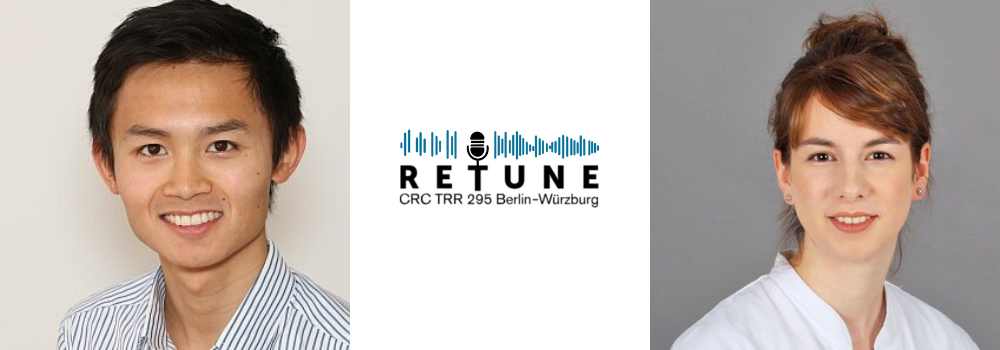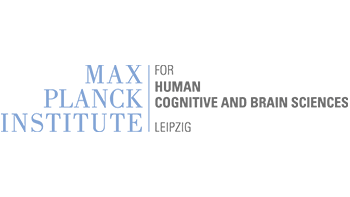Jan 12, 2025
ReTuneIn Interview
From Lab to Clinic: Advancing Movement Disorder Research
In this interview, we talk with two researchers, Dr. Lisa Harder and Dr. Yangfan Peng, who share insights into their current research on movement disorders. They discuss their projects, the challenges they face, and their perspectives on their work.
Welcome, Dr. Harder and Dr. Peng. It’s great to have you here.
Dr. Lisa Harder: Thank you!
Dr. Yangfan Peng: Thanks!
Dr. Harder, could you start by introducing yourself and your research?
Dr. Lisa Harder: Sure! My name is Lisa Harder, but some may still know me under my old name, Lisa Rauschenberger—I recently got married. I studied medicine at the University of Gießen and started working at the University Hospital of Würzburg, where I specialize in movement disorders, such as Parkinson’s and dystonia.
My research focuses on understanding the mechanisms behind dystonia by studying the interaction between genetic predisposition and environmental factors. I investigate specific brain regions, such as the basal ganglia, to determine their role in dystonia development. Additionally, I study neuromodulation, such as deep brain stimulation (DBS), to explore ways to improve treatment.
In my new project within the SFB, I’m working on temporal interference stimulation in dystonic mice. We place two electrodes on the skull and apply two electrical fields to non-invasively stimulate deep structures in the brain, specifically the striatum. We want to see how this affects behavior and whether we can improve dystonic symptoms in these mice.
That sounds fascinating. You mentioned a connection between repetitive movements and dystonia—could you elaborate?
Dr. Lisa Harder: Yes! We induce dystonia in genetically predisposed mice by subjecting them to a repetitive forelimb overuse task. In our previous research, we found that similar repetitive fine motor movements in rats led to dystonic symptoms. This is particularly interesting because, in humans, musicians who perform repetitive fine motor movements, such as playing an instrument, can also develop dystonia. Our model allows us to study this in a controlled setting.
Do you also see dystonia patients in the clinic?
Dr. Lisa Harder: Yes, and that is a great motivation for my research. Just last week, I saw a patient with DBS in the globus pallidus whose symptoms had developed during a very stressful period. This brings in the potential role of gene-environment interaction. However, his symptoms were only poorly controlled by DBS.
Dr. Peng, could you tell us about your background and research?
Dr. Yangfan Peng: Of course! I studied medicine in Berlin at Charité and did my doctoral research at the Institute of Neurophysiology, where I focused on synaptic physiology. I then started specialty training in neurology but decided to return to research. I later moved to Oxford to learn in vivo electrophysiology, recording neural activity from awake mice performing reaching tasks.
In Oxford, I worked with neuropixels probes, which allow us to record activity from many neurons simultaneously. This was a new approach, and I had to establish an experimental setup from scratch. I developed a reaching task where mice reach for a water droplet while their neural activity is recorded.
That must have been a challenge. How did you manage to set up this experiment?
Dr. Yangfan Peng: I started just before the pandemic lockdown, so I had to design everything virtually using 3D modeling software before ordering the equipment. This actually helped me test configurations beforehand.
At one point, I attempted to attach three neuropixels probes together to record more data, but they are incredibly fragile. When I tried to adjust them, they broke, and I lost three probes at once, which was a costly mistake.
That must have been frustrating. What are you working on now?
Dr. Yangfan Peng: In my current project, I am using neuropixels recordings in combination with deep brain stimulation. I want to examine how stimulation affects different brain regions simultaneously. The challenge is to position both the DBS electrode and the recording probes in a way that doesn’t interfere with each other.
That sounds like a significant technical challenge. How do you balance research with clinical work?
Dr. Lisa Harder: It’s always a challenge. This past year, I worked in the clinic, but next week, I will return to full-time research. It’s difficult to conduct experiments in the evenings after working in the clinic, so dedicated research periods are essential.
Thank you both for sharing your insights. It was a fascinating discussion!
© Pictures: TRR 295 ReTune / UKW Würzburg











